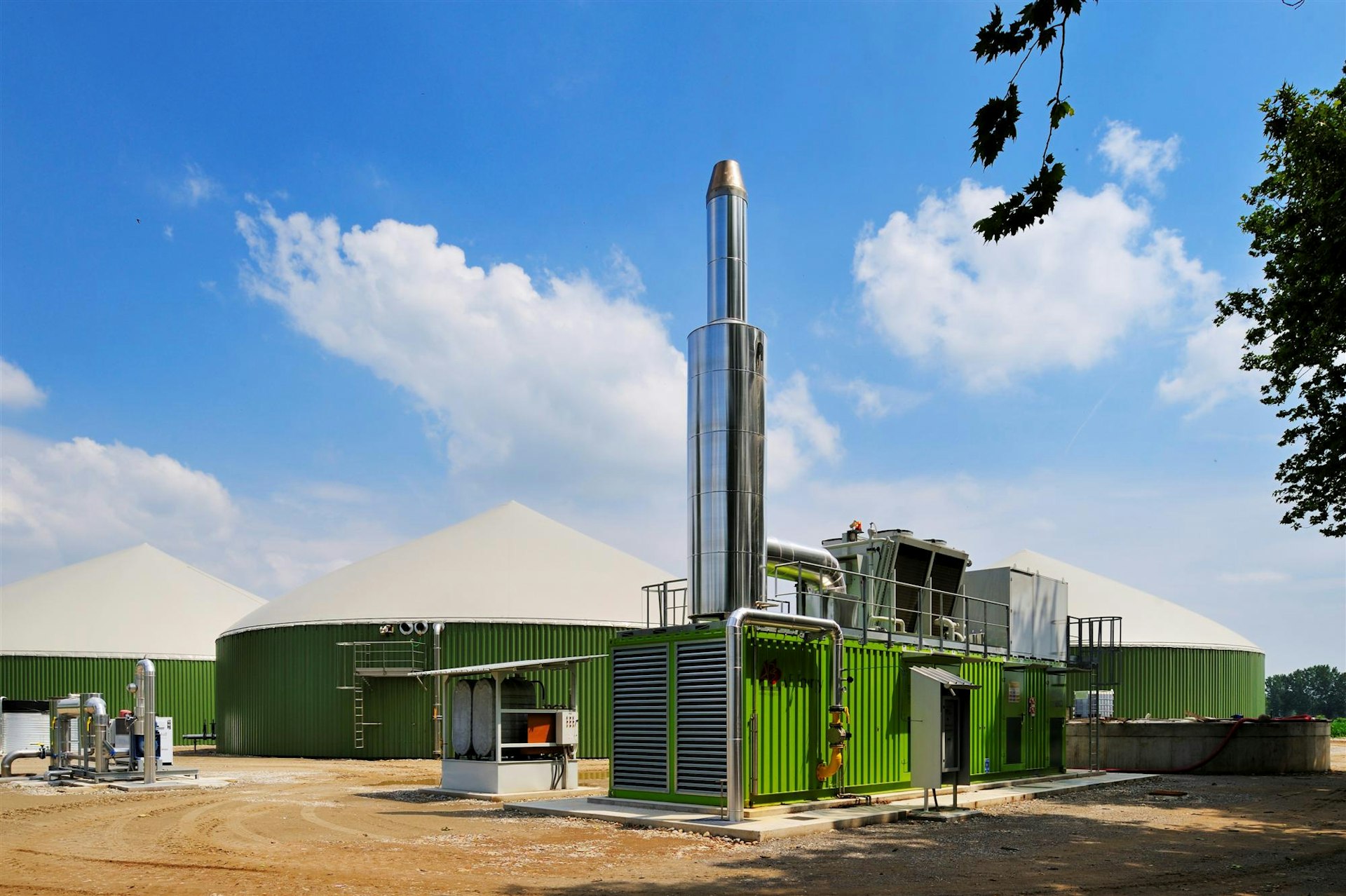In a world where sustainability and energy transition are increasingly becoming paramount, analysing alternative, renewable and clean energy sources is now a common concern. These include biogas, a mixture of methane and gas, formed by an anaerobic digestion of biomass, i.e. of organic materials of various origin.
In short, biogas allows producing renewable energy from waste. To better understand how it works and how it can be exploited, let's analyse the structure, the production process and all the pros and cons of this clean energy source.
Biogas: what it is and how it is produced
The term "biogas" identifies a natural gaseous fuel, consisting mainly of natural gas and of a mixture of other gases, including carbon dioxide. Biogas is produced through an anaerobic digestion process, i.e. the fermentation in the absence of oxygen and at a controlled temperature of the biomass. Biomass is an organic material of various origin, such as, for example, animal manure, sewage sludge, organic fraction of solid urban waste, agro-industrial waste, agricultural by-products, and dedicated crops.
The anaerobic fermentation is carried out by bacteria that digest the organic fraction and transform it into natural gas through a process consisting of several phases: first they "split" the organic substance into monomers, then they start an acid fermentation, which produces acids, carbon dioxide and hydrogen, followed by a methanogenesis phase during which Archaea bacteria capture CO₂ and convert it into natural gas. Methane or natural gas is a product with a high energy content which, when appropriately used, produces energy in the form of motive power (as occurs in cars) or of electrical energy (as occurs in CHP plants).
The biogas production process also generates another by-product, digestate, rich in ammoniacal nitrogen, which can be used as a renewable fertiliser.
What is a biogas plant composed of
Currently, biogas plants are used in a wide variety of fields, mainly in the agricultural sector but with dedicated applications also for industries with organic waste (e.g. beverage, food, or paper industries). The bulk of biogas energy production is therefore carried out using medium and large plants. The spread of domestic biogas is currently limited, mainly because of a lack of specific regulations on this subject.
A biogas plant consists of three main components:
One or more digesters where the fermentation process takes place. Different technological solutions are possible for this component, which depend on the features of each plant. The main ones include wet digestion, characterised by a dry matter content in the digester of about 10%, and dry digestion, with a dry matter content starting from 30%;
The CHP system, allows the simultaneous production of electrical and thermal energy. The eight-cycle engine produces mechanical energy and conveys it to an alternator to generate electricity. The cooling water of the engine, using a plate heat exchanger, becomes high-temperature water. The flue gas fumes, which are close to 400°C, can be used to produce hot water, superheated water, steam or thermal oil via a boiler, or used as they are in the production process;
The optional biogas-to-biomethane upgrading system, where biogas is purified in order to obtain biomethane, is suitable for feeding into the grid or for powering vehicles. The most widespread and performing technology in this sense is the membrane system, which has a selective permeability useful for the separation between CH₄ and CO₂.
Biogas: advantages and disadvantages
In the past, problems related to the type of dedicated biomass (e.g. corn), to the management of odor pollution and to that resulting from transporting the biomass from the production site to the plant (if not produced on-site) occurred frequently in the production of biogas. The technologies currently available and the new regulations have allowed overcoming all the disadvantages of biogas: the use of mainly animal manure for feeding the plant is encouraged and dedicated systems for the treatment of olfactory emissions are available on the market. The use of biogas, today, therefore has many advantages:
Circularity. It allows providing value to agricultural livestock waste and is a valid solution for disposing of animal manure, solving upstream the problems associated with its spread on the land and with the limits of the quantities of nitrogen that can be released. Furthermore, the digestate represents an excellent natural fertiliser that can be used instead of chemical fertilisers;
Sustainability. This is a renewable fuel that allows greater autonomy in energy supplies and can significantly contribute to the energy transition;
Energy efficiency. It allows the supply of both thermal and electrical energy on a continuous basis, acting as a stable base to balance the discontinuous supply of renewable energy;
Return on investment. It represents an important integration of agricultural income, thanks to incentive mechanisms;
Biogas: cost of a plant
The cost of a biogas plant depends on numerous factors, which must be analysed during the design phase to outline the profitability of the investment. It’s important to make us of sector professionals who are able to assess the features of each individual case based on different design variables, such as:
The cost of procuring biomass;
The cost of building, operating and maintaining the plant;
The supplementary income derives from the various incentive mechanisms;
The economic sustainability of the plant itself after the incentive period.
